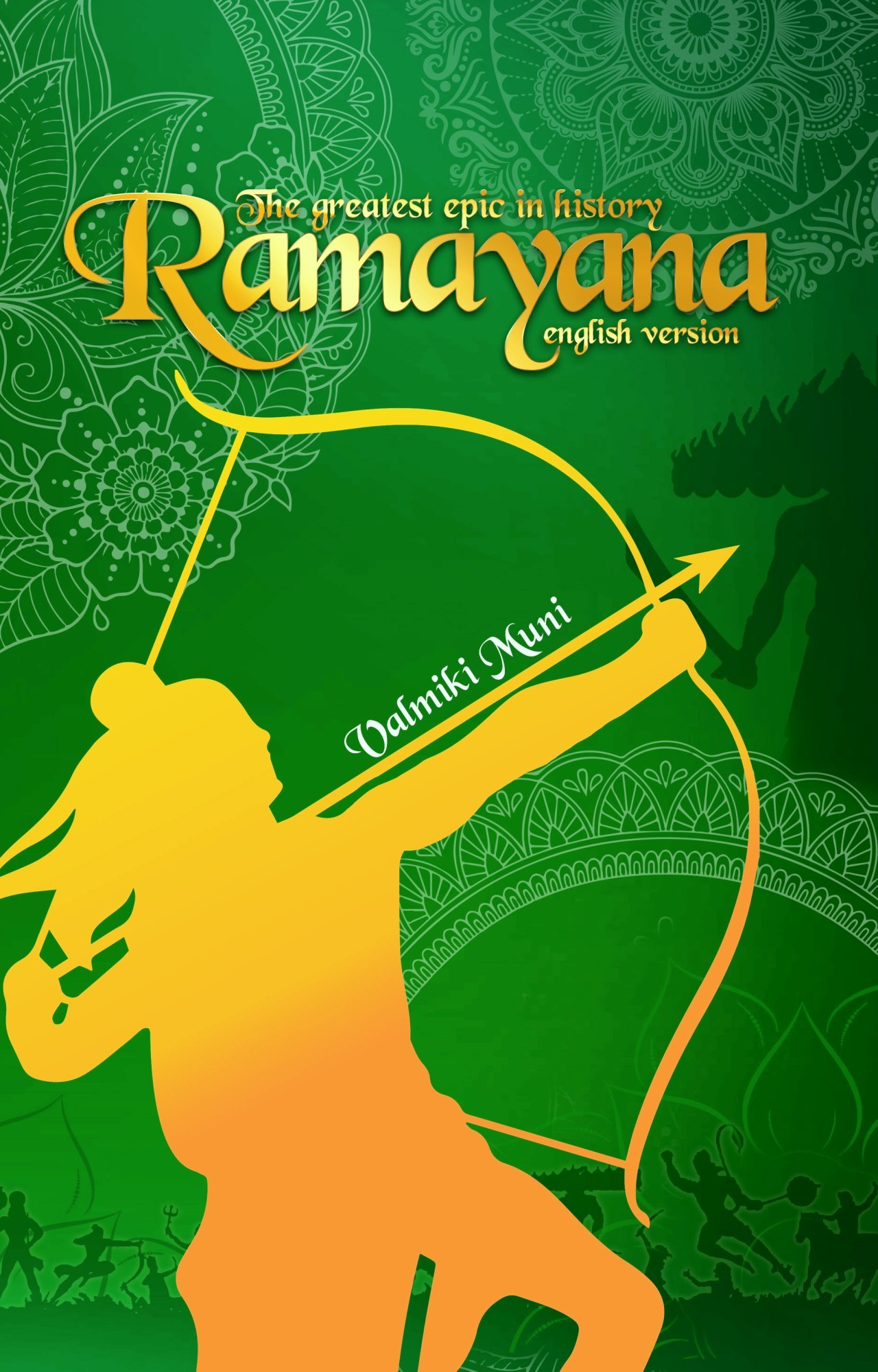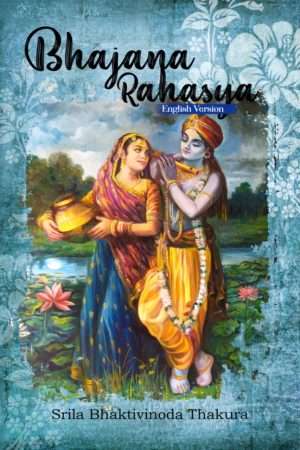Far older than the Maha-bharata, the Ramayana was written many years ago by a respected and revered sage: Valmiki Muni. Valmiki was not always what in his days was considered an Aryan – or a man respected for his spiritual stature. On the contrary, he was a man of poor moral principles. But, through the intercession of some saints he had the good fortune to meet, Valmiki changed his mentality so profoundly that he became one of the most respected sages of his time. “Power of the pure devotees,” the poet himself would say. The Ramayana is a very ancient story, perhaps the oldest that the world can remember. How old? There are different dates that vary considerably depending on the opinion of the scholar, but the most reliable estimates trace the first manuscript, the original one, to well before Western history recorded the first civilizations. In the times that scholars call prehistoric, India was the largest and most advanced civilization that ever existed. Valmiki wrote his poem almost entirely simultaneously with the unfolding of the story itself, and then made it public thanks to his disciples, who went to recite it everywhere, singing and accompanying themselves with musical instruments. Introduction 17 Geographical Hints Ayodhya is located in the state of Uttara Pradesh in northern India, not far from the large commercial center of Lucknow. It is a large and prosperous city, very beautiful. In Ayodhya the devotees of Rama are practically one hundred percent of the population, and there are still numerous places that commemorate the reign of Rama (ramarajya).
Table of Contents
Dedicated
Introduction
The Initial Inspiration
Historical Notes
Geographical Hints
Notes Of Philosophical Nature
How Can the Ramayana be of Importance in Modern Reality?
How to Understand the Ramayana?
India’s Treasures
Can We Learn Something Practical?
The Ramayana: Allegory or Historical Event?
To Dispell Some Perplexities
The Structure Of This Edition
Acknowledgments
Important
Bala Kanda
Narada Muni Narrates the Ramayana to Valmiki
The Birth Of the Sloka Style
Valmiki’s Mission
Rama’s Sons
Kusha and Lava Narrate the Ramayana to Their Father
The Narration Of the Ramayana Begins
Dasaratha’s Desire
Rishyasringa
The Yajna
The Concerns Of the Devas
Dasaratha’s Wives Pregnancies
The Devas Incarnate On Earth
Dasaratha’s Four Sons
Visvamitra’s Arrival
Rama and Laksmana leave with Visvamitra
Story Of Tataka
The Battle With The Demons Maricha and Subahu.
Story Of Ahalya
Rama Sees Sita For The First Time
Sita and Rama’s Marriage
Parasurama
Years of Happiness
Ayodhya Kanda
Dasaratha Wants to Crown Rama
Manthara
In Exile
Arrival In Citrakuta
Dasaratha’s Curse
Bharata and Satrughna Return to Ayodhya
Bharata Invites Rama to Return
Visit To The Sage Kanva
Aranya Kanda
In Dandaka: Rama Kills Viradha
The Hermitage of Sarabhanga
Agastya Rewards Rama
Pancavati and Jatayu
Surpanakha
The Battle Against the 14,000 Raksasas
Akampana Tells What Happened to Ravana
Ravana Goes to Maricha
Surpanakha Wants Revenge
Maricha Is Forced
The Golden Deer
Laksmana Leaves Sita Alone
Ravana Kidnaps Sita
Jatayu Defeated by Ravana
Sita Leaves Clues
Rama and Laksmana Understand the Deception
Jatayu’s Death
Ayomukhi
Kabandha Leads Rama To the Vanaras
Kiskindha Kanda
Spring Without Sita
The Vanaras
Hanuman Meets Rama
The Pact With Sugriva
Vali’s Story
Sita’s Shawl And Bracelet
The Battle Between Sugriva and Bali
Vali’s Death
Sugriva Is Crowned King
Time Tortures Rama
Looking For Sita
The Journey Of Hanuman’s Group
Sampati Helps the Vanaras
Hanuman Prepares to Leap to Lanka
Sundara Kanda
Hanuman’s Leap
The Mountain Mainaka
The Surasa Demon
The Raksasi Simhika
Arrival in Lanka
Ravana’s City
Looking for Sita
Sita is Located In the Asoka Garden
Ravana Visiting Sita
Trijata’s Dream
Hanuman Speaks to Sita
The Story Of the Crow
Hanuman Gets Captured
The Meeting With Ravana
Hanuman Devastates Lanka
Hanuman’s Return
The Good News
Yuddha Kanda
Preparations For War
Ravana Determined to Fight
Vibhisana Abandons Ravana and Joins Rama
Messenger Shuka
Rama Forces Varuna to Let Them Pass
The Construction Of the Bridge
Rama’s Army Arrives in Lanka
Ravana Sees the Enemy’s Army
The Magician’s Trick
Bad Warning Signs
Sugriva Challenges Ravana
The Start Of the War
The Mighty Indrajit
Sita on the Battlefield
Ravana’s Major Generals Lose Their Lives
Kumbhakarna
Rama Kills Kumbhakarna
Indrajit
Indrajit Returns To The Battlefield
Hanuman Brings Mountains to Lanka
Indrajit Defeated
Rama and Ravana Confront Each Other On the Battlefield
Rama Kills Ravana
The Funeral
Rama Meets Sita
Sita’s Test
The Devas Congratulate
Rama Prepares to Return to Ayodhya
On the Throne
The Reign of Rama
Uttara Kanda
The History Of The Raksasas
The Other Race of Raksasas
The Raksasa Lineage of the Pulastya Line
Birth and Life of Ravana
Those Who Had Defeated Ravana
Story Of Hanuman
Sita Becomes Pregnant
Criticism of Rama
Sita In Exile
The Story Of Nimi and Vasistha
The Arrival of Cyavana
The Birth of Sita’s Children
Satrughna Kills Lavana and Founds Mathura
Satrughna Listens to the Ramayana
Agastya Tells Rama A Story
The Story of Dandakaranya
The arrival of Valmiki and Sita’s Son in Ayodhya
Kusha and Lava Recite the Ramayana To Their Father
Sita’s Departure
The Return Of Laksmana and Rama To Vaikuntha
Valmiki Blesses the Ramayana Readers
Glossary








